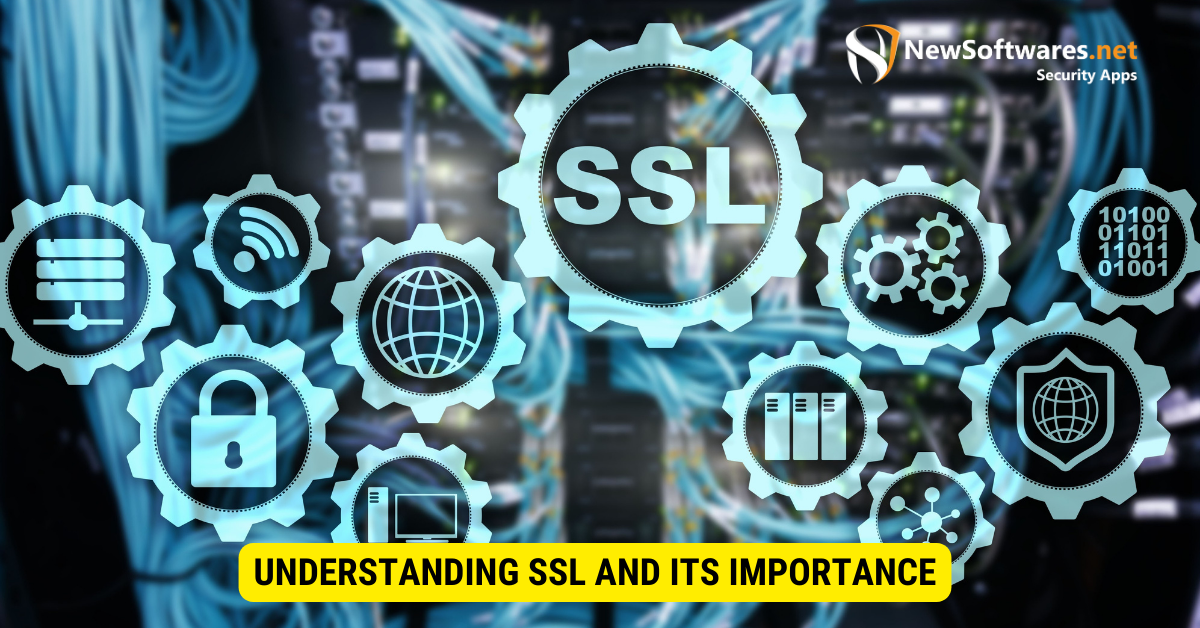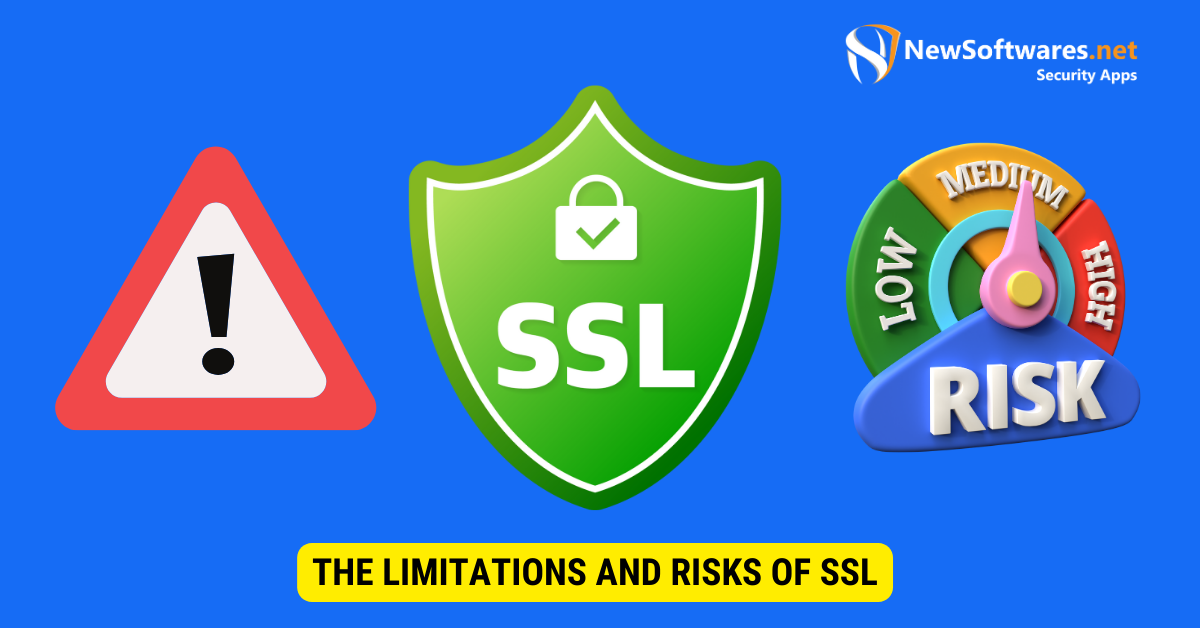Yes, SSL (Secure Socket Layer) securely transfers data over the internet by encrypting the connection between a web user’s browser and the web server.
SSL (Secure Sockets Layer) is a widely used security protocol that safeguards the secure data transfer over the internet. In today’s digital age, where data openings and cyber spells are rampant, it is crucial to understand the importance of SSL and how it plays a vital role in protecting sensitive information.
Understanding SSL and Its Importance

SSL, or Secure Sockets Layer, is a cryptographic procedure that launches a secure connection between a web server and a client. It delivers a secure channel for transmitting data over the internet, protecting it from unauthorized access or interception. The importance of SSL cannot be overstated, as it serves as a foundation for secure and trustworthy online communication.
Regarding online security, SSL plays a vital role in safeguarding sensitive information. Whether logging into your online banking account, making an e-commerce purchase, or submitting personal details on a website, SSL ensures that your data remains confidential and protected from prying eyes.
What is SSL?

SSL protocol uses encryption algorithms to secure the data between a web server and a client. It enables the server’s authentication, ensuring the data is sent to the intended recipient. SSL also provides message integrity, preventing tampering or alteration of the transmitted data.
When you call a website that uses SSL, your browser and the web server establish a secure connection by exchanging digital certificates. These certificates contain cryptographic keys used to encrypt and decrypt the transmitted data. This encryption process ensures that even if someone intercepts the data, they won’t be able to decipher it without the corresponding keys.
Furthermore, SSL certificates also verify the identity of the website you’re visiting. They are issued by trusted third-party organizations known as Certificate Authorities (CAs). These CAs validate the authenticity of the website’s owner and domain, providing users with confidence that they are interacting with a legitimate and trustworthy entity.
Why is SSL Important?
SSL is crucial for maintaining the confidentiality and integrity of sensitive information transmitted over the internet. Without SSL, data such as passwords, credit card details, or personal information can be easily intercepted and exploited by malicious individuals.
Imagine entering your credit card information on an online shopping website without SSL. Your data would be vulnerable to interception, potentially leading to unauthorized charges on your card or even identity theft. SSL ensures that your credit card details are encrypted during transmission, making it virtually impossible for anyone to access or misuse them.
Moreover, SSL assures users that their data is securely transmitted, fostering trust and confidence in online transactions. When you see the padlock icon or “https://” in the URL of a website, it indicates that SSL is in use, giving you peace of mind that your information is protected.
In addition to protecting user data, SSL also helps prevent phishing attacks. Phishing is a technique used by cybercriminals to trick operators into revealing their sensitive information, such as passwords or social security numbers, by impersonating a trusted website. SSL certificates verify the authenticity of websites, making it harder for attackers to create convincing fake websites.
Overall, SSL is a vital component of online security. It ensures the privacy, integrity, and authenticity of data transmitted over the internet, creating a secure environment for operators to engage in online activities. By implementing SSL, website owners demonstrate their commitment to protecting their users’ information, fostering trust and confidence in the digital world.
The Role of SSL in Data Transfer
SSL (Secure Sockets Layer) plays a vigorous role in securing data transfer, ensuring that sensitive information remains confidential and protected from unauthorized access. Understanding how SSL works in data transfer and its benefits is essential for organizations and individuals.
How SSL Works in Data Transfer
SSL encrypts the data between a web server and a client. This encryption process involves using cryptographic algorithms and keys to transform the data into an unreadable format. When a secure connection is reputable, the client and server perform a series of cryptographic handshakes to negotiate the encryption algorithms and keys. This process creates a secure tunnel through which data can be transmitted safely.
Once the secure connection is established, any data transmitted between the client and server is programmed and can only be decoded by the intended recipient. This encryption ensures that even if unauthorized individuals intercept the data, it remains unreadable and useless to them.
Furthermore, SSL also provides authentication, verifying the identity of the server. This authentication process involves using digital certificates issued by trusted third-party organizations known as Certificate Authorities (CAs). These certificates contain information about the server’s identity and are used to validate its authenticity. By verifying the server’s identity, SSL prevents unauthorized access and protects against phishing attacks where attackers impersonate legitimate websites.
The Benefits of Using SSL for Data Transfer
Using SSL for data transfer offers numerous benefits. Firstly, it ensures the confidentiality of sensitive information. By encrypting the data, SSL prevents unauthorized individuals from intercepting and understanding the content of the transmitted data. This is particularly crucial when transmitting personal information, financial details, or other sensitive data that should remain private.
Additionally, SSL provides authentication, which is essential for establishing trust between the client and server. By verifying the server’s identity, SSL safeguards that the client is communicating with the intended and legitimate server, preventing any malicious actors from intercepting or altering the data. This authentication process is especially important for e-commerce websites, online banking platforms, and any other service dealing with sensitive user information.
Moreover, SSL guarantees the integrity of the data. Using cryptographic algorithms, SSL ensures that the data remains unchanged during transmission. This prevents any tampering or modification of the data by unauthorized individuals. If any alteration occurs during transmission, SSL detects it and alerts the client, ensuring the integrity and reliability of the transmitted data.
In conclusion, SSL plays a crucial role in securing data transfer. By encrypting the data, providing authentication, and ensuring data integrity, SSL safeguards sensitive information and protects against unauthorized access. Understanding the workings and benefits of SSL is essential for organizations and individuals seeking to maintain the confidentiality and security of their data during transmission.
SSL vs. Other Data Transfer Protocols
When comparing SSL with other data transfer protocols, such as HTTP or FTP, it becomes evident that SSL offers significant advantages in terms of security and privacy.
Comparing SSL with HTTP
While HTTP is a widely used protocol for web communication, it is not secure. Data transmitted over HTTP is plain text, making it susceptible to interception and unauthorized access. On the other hand, SSL encrypts the data, providing a secure channel for transmission.
Comparing SSL with FTP
FTP (File Transfer Protocol) is usually used for file transfers, but it lacks the security features offered by SSL. Data is sent in plain text with FTP, leaving it vulnerable to interception. On the other hand, SSL encrypts the data, preventing unauthorized access and ensuring secure file transfers.
The Limitations and Risks of SSL

While SSL is a robust security protocol, it is not without its limitations and risks. Understanding these limitations and mitigating the associated risks is crucial for ensuring optimal security.
Potential Vulnerabilities in SSL
SSL is not immune to vulnerabilities. One significant vulnerability is the exploitation of weak encryption algorithms or outdated SSL versions. Additionally, flaws in SSL implementation or configuration can lead to vulnerabilities. It is essential to keep SSL up to date and ensure the use of strong encryption algorithms to mitigate these risks.
Mitigating Risks in SSL Data Transfer
To mitigate risks in SSL data transfer, it is necessary to adhere to SSL best practices. Regular updates and patches should be useful to maintain the latest SSL versions and encryption algorithms. Security audits and vulnerability scans can help recognize and resolve any potential weaknesses in the SSL implementation. Furthermore, monitoring and logging SSL activities can assist in detecting and responding to any suspicious or malicious activity.
Implementing SSL for Secure Data Transfer
Implementing SSL for secure data transfer requires careful planning and execution. The following steps outline the process of implementing SSL effectively.
Steps to Implement SSL
- Get an SSL certificate from a trusted certificate authority (CA).
- Install the SSL permit on the web server.
- Configure the webserver to enable SSL and enforce secure connections.
- Test the SSL implementation thoroughly to ensure proper functioning.
- Monitor and maintain the SSL certificate, renewing it when necessary.
Maintaining and Updating SSL for Optimal Security
Maintaining and updating SSL is crucial for optimal security. Regularly monitoring for updates, patches, and vulnerabilities is essential. Timely renewal of SSL certificates and reviewing the implementation for any security gaps ensures that SSL continues to provide a secure data transfer environment.
Key Takeaways
- SSL ensures data privacy and integrity during transfer.
- Websites with SSL have a padlock symbol in the address bar.
- SSL uses both public and private key encryption.
- It protects against eavesdropping and man-in-the-middle attacks.
- SSL certificates are delivered by Certificate Authorities (CAs).
FAQs
Q: How can I tell if a website uses SSL?
A: Look for the padlock symbol or “https://” in the address bar.
Q: Is SSL the same as TLS?
A: TLS (Transport Layer Security) is the successor to SSL, but the terms are frequently used interchangeably.
Q: Can SSL-encrypted data be intercepted?
A: While interception is difficult, ensuring a trusted CA issues the SSL certificate is essential.
Q: Do all websites need SSL?
A: Any website collecting personal or sensitive data should have SSL. It’s also beneficial for SEO and trustworthiness.
Q: How do I get an SSL certificate for my website?
A: Certificates can be purchased from CAs or obtained free from sources like Let’s Encrypt.
Conclusion
In conclusion, SSL is indubitably necessary for securely transferring data over the internet. By understanding the importance of SSL, its role in data transfer, comparing it with other protocols, acknowledging its limitations and risks, and implementing SSL correctly, organizations and individuals can safeguard sensitive information and maintain a secure online environment.
